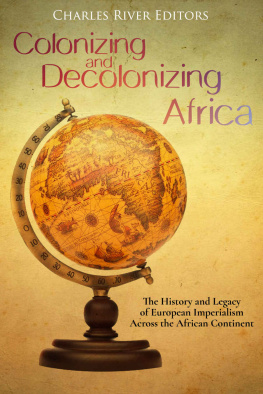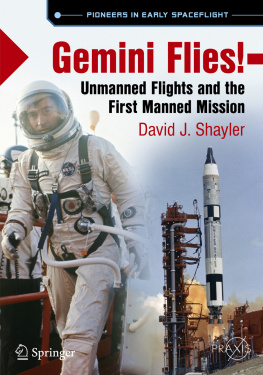The Pioneer Program: The History and Legacy of NASAs Unmanned Space Missions to the Outer Solar System
By Charles River Editors
A picture of Pioneer 10 under construction
About Charles River Editors
Charles River Editors provides superior editing and original writing services in the digital publishing industry, with the expertise to create digital content for publishers across a vast range of subject matter. In addition to providing original digital content for third party publishers, we also republish civilizations greatest literary works, bringing them to new generations of readers via ebooks.
Sign up here to receive updates about free books as we publish them, and visit Our Kindle Author Page to browse todays free promotions and our most recently published Kindle titles.
Introduction
A depiction of the Pioneer probes
Today the Space Race is widely viewed poignantly and fondly as a race to the Moon that culminated with Apollo 11 winning the Race for the United States. In fact, it encompassed a much broader range of competition between the Soviet Union and the United States that affected everything from military technology to successfully launching satellites that could land on Mars or orbit other planets in the Solar System. Moreover, the notion that America won the Space Race at the end of the 1960s overlooks just how competitive the Space Race actually was in launching people into orbit, as well as the major contributions the Space Race influenced in leading to todays International Space Station and continued space exploration.
Space exploration was always an expensive business, and throughout NASAs history, the agency has had to justify to Congress its need for every dollar it intended to spend. This problem has helped NASA to be more careful and more creative with the money they did receive, and scientists had to justify the equipment they wanted to include on each space probe. They had to justify the size and the power demand, too. If they wanted too much, the entire mission might be scrubbed, and all their work would have been for naught. This made planning and designs leaner and more efficient, as scientists and engineers were more careful with their recommendations.
At the same time, scientists have been repeatedly surprised by their discoveries. Some of those discoveries revealed the dangers of space, like the Van Allen radiation belt, dangerous to astronauts without the right kind of protection. NASA also discovered the massive radiation belt surrounding Jupiter thanks to the Pioneer probes in 1973 and 1974. Similarly, with the knowledge that Titan, the largest moon of Saturn, has a thick atmosphere, later missions were sent to investigate the moon up close. Thus, the Huygens lander pierced the Titan atmosphere in January of 2005 to investigate.
Although Apollo 11s successful mission to the Moon is seen as the culmination of the Space Race, and the Apollo program remains NASAs most famous, one of the space agencys most successful endeavors came a few years later. In fact, the Pioneer program was the most diversified sequence of any of NASAs programs, and though theyre now remembered for being among the first probes in history to reach the Outer Solar System, the elaborate planning changed goals several times over several years before resulting in historic successes. NASA had wanted to do a Grand Tour of the Solar System toward the end of the 1970s to take advantage of the scheduled alignment of planets, which meant the Pioneer missions were meant to be test runs prior to the main events (Voyager 1 and Voyager 2), and a great many things discovered by Pioneer 10 and Pioneer 11 were essential to the successful planning of the Voyager probes.
The Pioneer Program: The History and Legacy of NASAs Unmanned Space Missions to the Outer Solar System examines the origins behind the missions, the space probes involved, and the historic results. Along with pictures of important people, places, and events, you will learn about the Pioneer program like never before.
Studying the Solar System
From the earliest times, people have looked up at the night sky and wondered about those bright points of light. Before the age of cities, the moonless night sky had always been dark and full of stars so numerous they could never be counted. All of them were contained within the Milky Way galaxy, a permanent cloud with countless millions of stars.
William Gilbert (15441603), who discovered that Earth had two poles of a magnetic field, imagined that other worlds orbiting distant stars had their own magnetic fields and perhaps even life. In 1610, the legendary Italian scientist Galileo Galilei pointed his telescope toward Jupiter and discovered that it had four moons that went around it in the same manner as the planets that circled the Sun. Respective to distance from their parent planet, they are Io, Europa, Ganymede and Callisto.
It wasnt until 45 years later that Dutch astronomer Christiaan Huygens discovered a massive moon orbiting the ringed planet Saturn. On March 25, 1655, Huygens discovered Titan, the only moon in the Solar System with a thick atmosphere. In fact, the atmosphere has a surface pressure 1.45 times that found at sea level on Earth, and Titan has a mean diameter of 5,150 kilometers (1.48 times that of the Moon), making Titan the second largest natural satellite in the Solar System after Jupiters Ganymede. Both Titan and Ganymede are larger than the planet Mercury.
Huygens, trusting his own memory, had holes of various sizes bored into a screen facing the sun and found the one that most closely matched the apparent brightness of Sirius, the Dog Star, the brightest in the night sky. From this, he calculated the immense distance to that star. If the Sun and Sirius had been intrinsically the same brightness when viewed from the same distance, the scientist would have been close in his calculations. However, Sirius is an A1V hot, blue-white dwarf, far brighter than the Sun, which is a G2V, yellow-white dwarf star. Sirius when measured with todays accuracy is 22.3 times as bright as the Sun, so if they were to be placed side-by-side at the standard distance of 10 parsecs (32.6 light years), Sirius would be 3.37 magnitudes brighter.
On March 13, 1781, German-born English astronomer William Herschel discovered the planet Uranus. Originally, he thought it was a comet, but other astronomers calculated its orbit and found it to be nearly circular, like the other planets.
In 1801, Italian priest Giuseppe Piazzi discovered a new planet orbiting between Mars and Jupiter. It turned out to be extremely small with a diameter of only 946 kilometers (27% of the Moons diameter), and Piazzi suggested calling it Cerere Ferdinandea, but the international community of astronomers settled on Ceres. Today, Ceres is referred to as a dwarf planet.
The following year, German astronomer Heinrich Wilhelm Olbers discovered another minor planet between Mars and Jupiter which today is called Pallas. Its mean diameter is about 512 kilometers, but the body is far from perfectly spherical, with dimensions 476 kilometers, 516 kilometers and 550 kilometers. Because of its oblong shape, it is not considered to be a dwarf planet, but merely an asteroid.




















